The verdict: On price, amenities, handling, all-weather safety and versatility, the Crosstrek is hard to beat. At a stoplight, it’s much easier.
Versus the competition: The Crosstrek was once the biggest vehicle and best value in the class, but the competition has started to copy its formula.
We liked the original Subaru Crosstrek — an Impreza-based, butched-up, soft-roader hatchback — enough that it won our Subcompact SUV Challenge in 2015. Now, a second-generation Crosstrek has arrived, and while it may look similar to the outgoing one, it is indeed an all-new car. Sitting on the new Subaru Global Platform that will form the basis of nearly all of Subaru's future cars, the 2018 Crosstrek is more than 95 percent new. Again based on the Impreza, it's a compact hatchback with exceptional interior room and standard all-wheel drive.
Go-Anywhere Looks
The change from Impreza to Crosstrek starts with the parts you can see. The Crosstrek's sheet metal shares some panels with the Impreza, but gray plastic wheel arches, bumper covers and rocker panels add some durability to the look. It sits visibly higher than the Impreza, with 8.7 inches of ground clearance.
All the changes, like them or not, really do set it apart from the Impreza; it looks like a very different animal, and this is part of what its customers find appealing, according to Subaru. A lot of customers like that outdoorsy, rugged look — even if far more Crosstreks are sold in urban markets than in rural ones. But that higher ride height helps when dealing with broken pavement and the travails of the urban jungle, as well, such as curbs and potholes. And for buyers who are genuinely outdoorsy, the low overall roof height helps when loading things onto the roof rack.
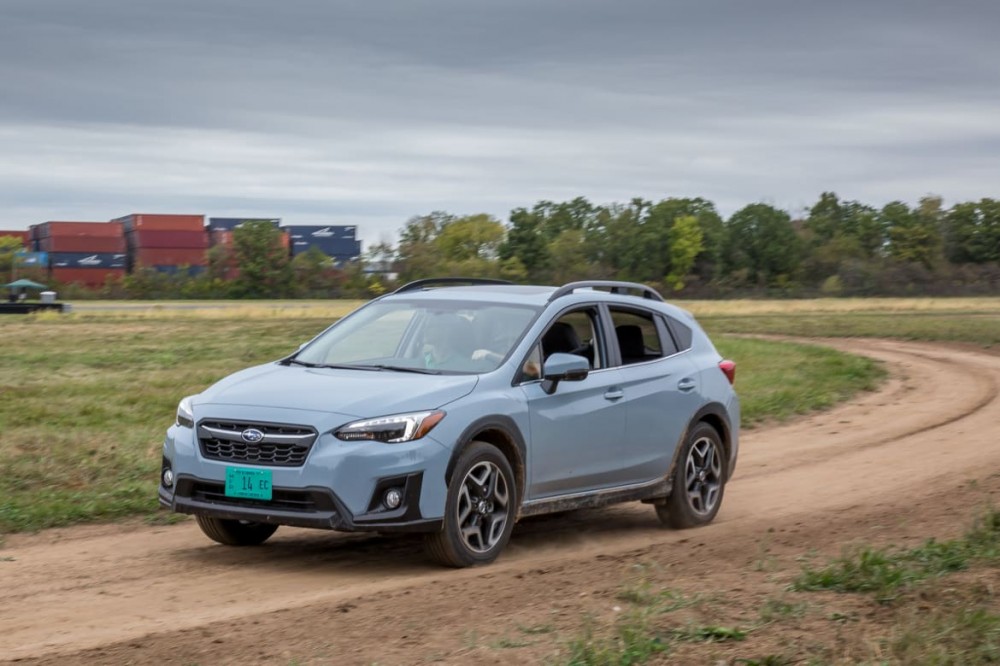
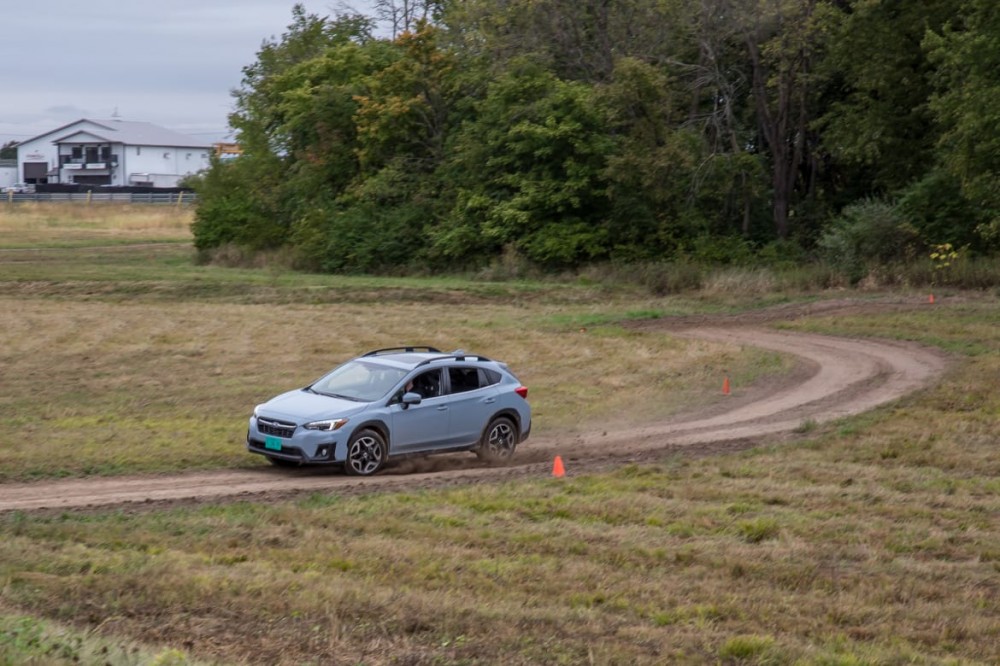
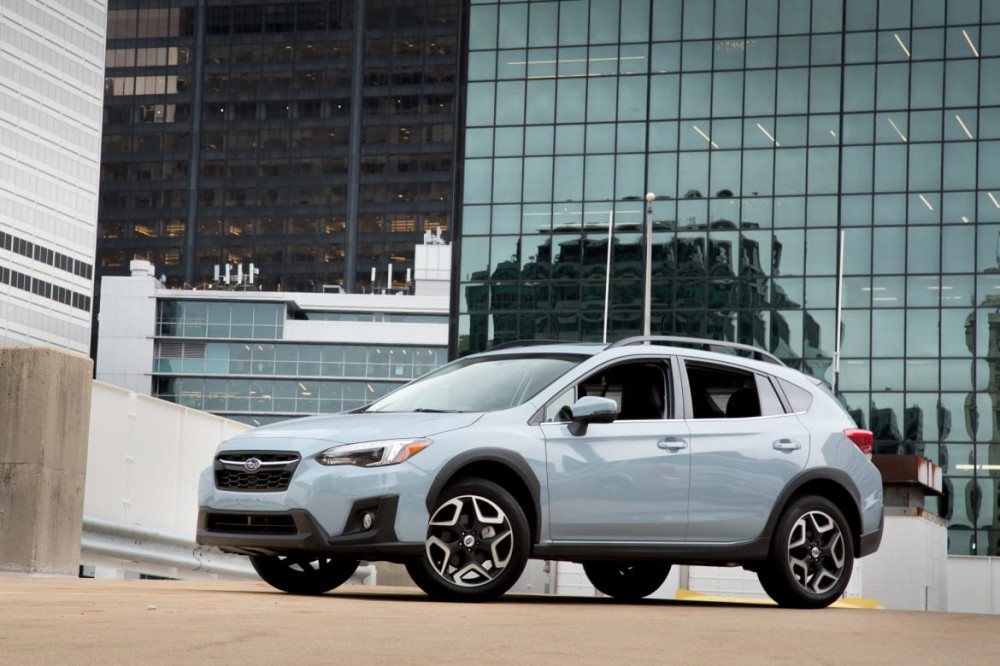
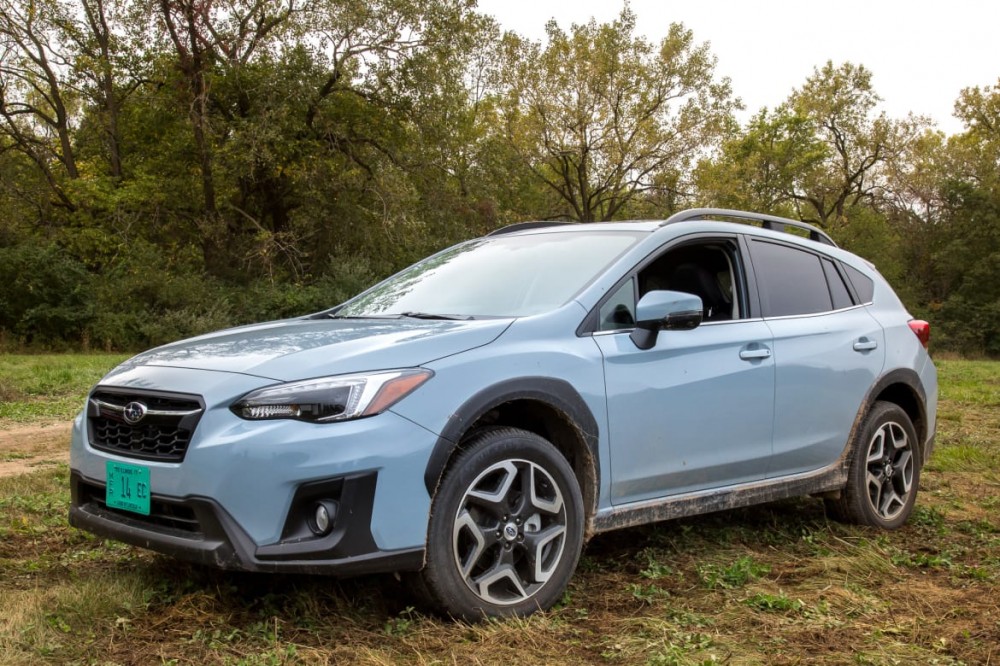
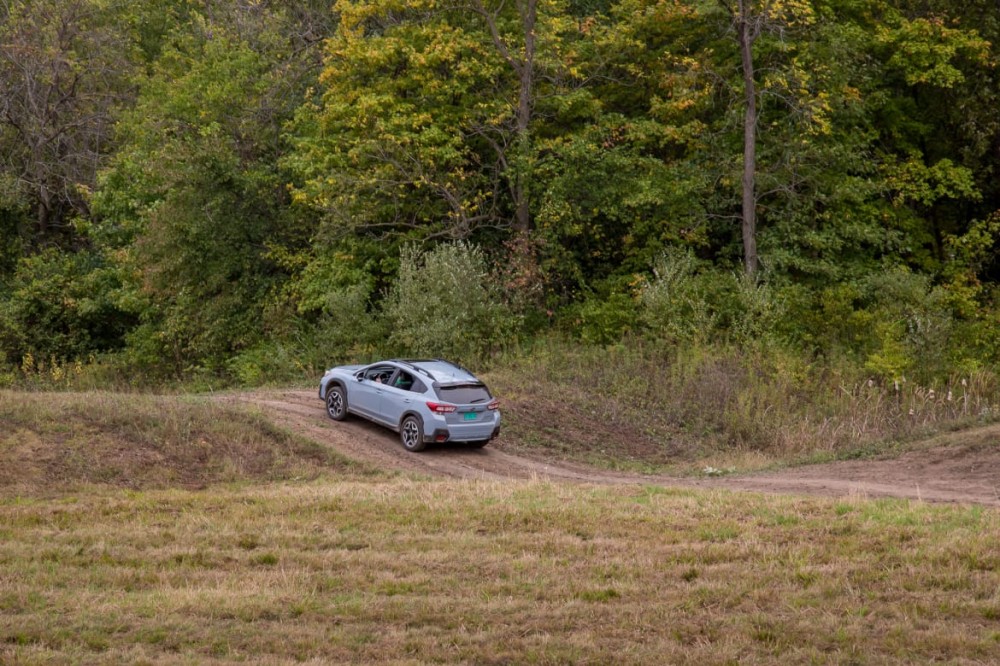
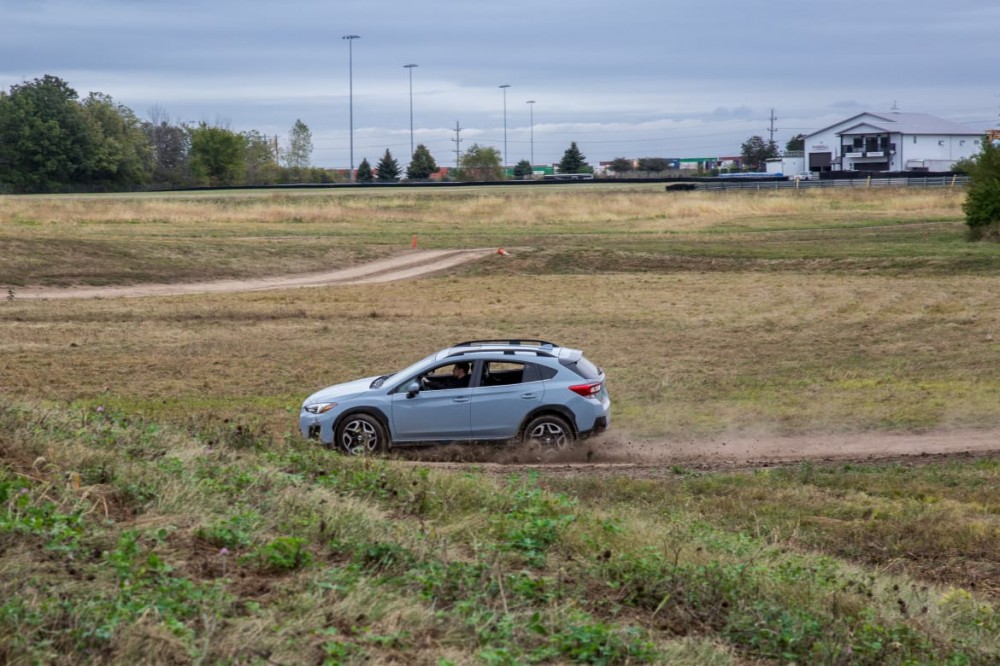
Fun, But Not Fast
Along with the new platform comes a new engine, although its specs will be familiar. Like the last Crosstrek, the new one comes with a 2.0-liter flat-four engine, this one making 152 horsepower and 145 pounds-feet of torque. That's up slightly in the horsepower department from the past model. Though not turbocharged, it does now feature direct injection. It can be mated to a standard six-speed manual transmission (one gear more than last year's five-speed) or a continuously variable automatic with a stepped-gear function meant to make it feel and sound more like a traditional geared automatic. All-wheel drive is standard for both transmissions.
I sampled both transmissions and have come to the rare conclusion that the CVT-equipped model is the one to have. This is odd given my penchant for enjoying shifting on my own, but the problem here is the engine, not the transmission: My biggest beef with the old Crosstrek was that it couldn't get out of its own way — it was woefully underpowered with both the manual and automatic. This has not been solved with the new vehicle, as the 2.0-liter engine is still anemic. The engine is just gutless; merging onto a swift-moving highway will be challenging, and don't even think of attempting to pass anyone on a hill or with a full load of passengers or cargo.
From a standing start, it feels like acceleration can be measured with a calendar. If you've already got some momentum built, it's not quite so bad; the Crosstrek responds quickly when you power through a corner. The CVT is well-matched to the engine, always keeping it on boil if you're driving aggressively, but you'll need to be prepared for it to rev its heart out as it tries to deliver what little power it has. There's little oomph below 2,500 rpm, and it seems to run out a little after 4,000 rpm. If you opt for the manual transmission, you'll be shifting it like mad to try and keep your speed up even on slight grades. Save yourself the angst and go for the CVT; it's a much more pleasant experience.
The upside of the underwhelming acceleration is top-of-the-pack fuel economy. The Crosstrek is EPA-rated 27/33/29 mpg city/highway/combined with the CVT, 23/29/25 mpg with the manual. Its 33-mpg highway rating is tops for the AWD class, even besting competitors' front-wheel-drive models. I question whether anyone will get those numbers in practice, however, as they'll all likely drive with a heavier foot than normal just to keep up with traffic.
The engine performance is the only blemish on what has become a polished, quiet and surprisingly refined vehicle. Base and Premium trims come with 17-inch wheels, and if you plan on doing any rough-road driving or off-road exploring, this is the combination to have (though you can skip the larger 18-inch wheels, whose lower-profile tires aren't nearly as bump-absorbing, especially off-road). It's remarkably compliant on two-track rough roads, soaking up bumps and not transmitting any unpleasant vibrations through the steering wheel. Credit the dramatically stiffer structure of the Subaru Global Platform, which has allowed Subaru to get more creative with its suspension and steering tuning.
On-road or off, the Crosstrek's steering is excellent. It uses a quick, 13:1 ratio — much sportier than most vehicles in its class and closer to the BRZ sports car than anything else in Subaru's lineup. This gives the Crosstrek entertaining handling: It's eager to turn into curves, communicative when it's in them and easy to control when you get a little over-eager on dirt roads. Just like the BRZ, it's slow, but once you build some speed, the car's handling characteristics make it highly entertaining. Maintain momentum in spirited driving, and it's actually fun to drive.
Maybe You Don't Really Need a Jeep?
The Crosstrek is surprisingly capable off-road. Subaru included its X-Mode low-speed off-road feature on the Crosstrek for the first time (it's already on the Outback and Forester). When activated at speeds below 13 mph, X-Mode changes throttle, stability control, traction control and all-wheel-drive settings to let you get out of sticky off-road situations, or descend slippery slopes with electronic hill descent control. I climbed some steep quarry slopes and descended them again with the computer controlling much of the car's powertrain and braking actions.
It was an impressive performance for a vehicle that's not really an off-road machine. It has no underbody skid-plate protection, no true creeper gear and no locking axles, plus it wears all-season on-road tires. But if you have to cross some rough terrain to get to your favorite trailhead or river entry, the Crosstrek will be perfectly capable of getting you there.
Bigger and Better Inside
The new Crosstrek's cabin is bigger than the last one. Nearly every dimension has been increased, and while it looks familiar, it's all-new and much improved. The traditional benefits of Subaru interiors remain: a very low beltline and slim pillars, meaning outward visibility is outstanding in every direction. This is helpful on the highway but also useful off-road, as it allows you to see over the hood easily when negotiating tricky terrain.
The Crosstrek is exceptionally roomy compared with competitors like the Mazda CX-3 and Honda HR-V. It's far more comfortable, especially for backseat passengers, but newer competitors like the Jeep Compass and Nissan Rogue Sport are starting to really challenge it in this department.
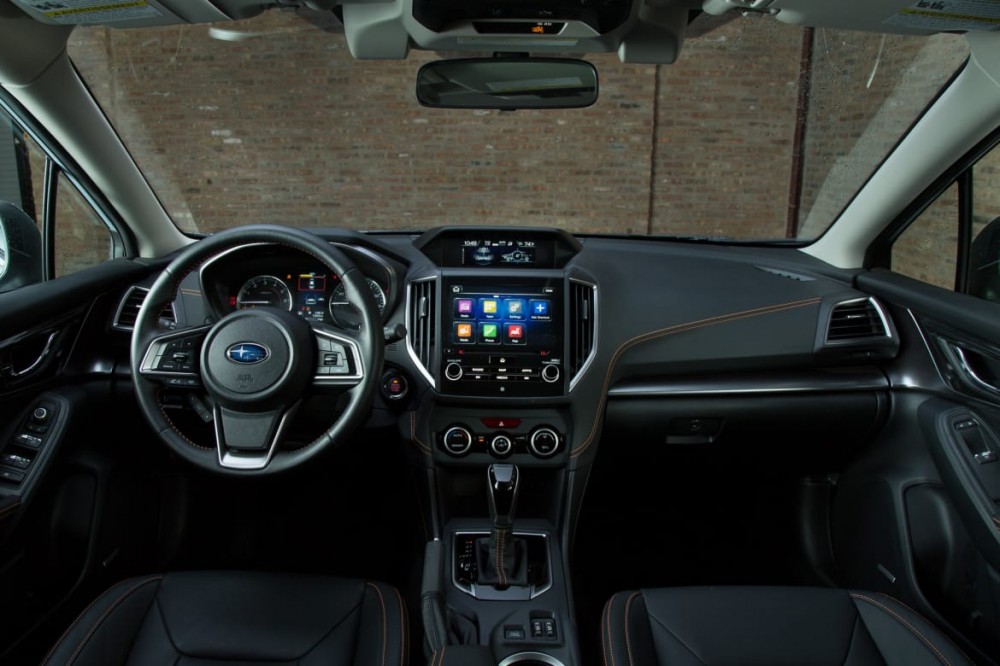
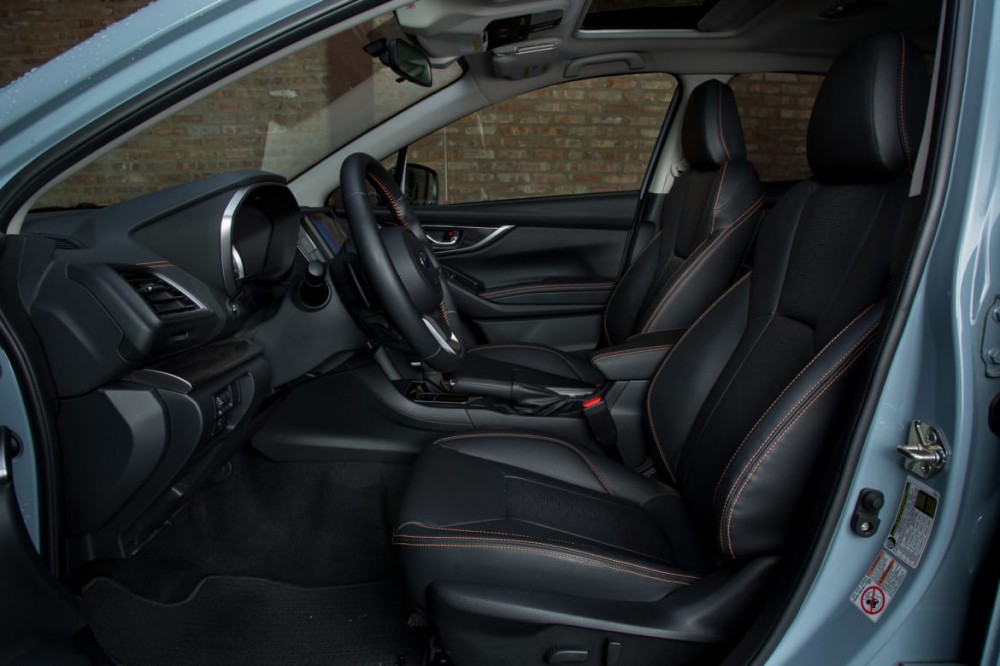
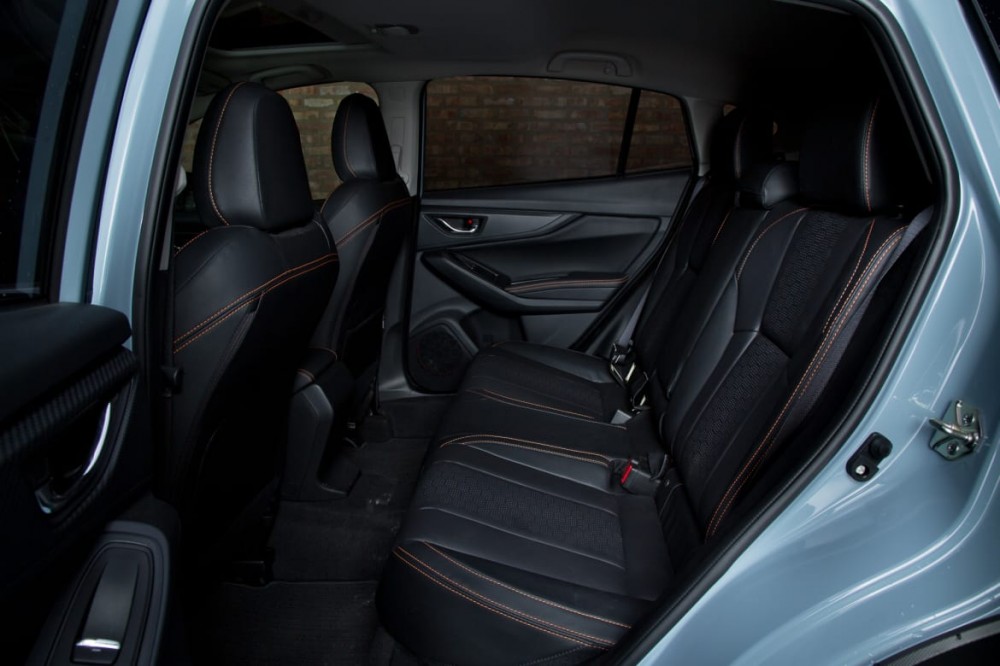
Traditional Subaru benefits remain: a very low beltline and slim pillars, making outward visibility outstanding in every direction.
The same thing is true when it comes to cargo space comparisons. The Crosstrek features 20.8 cubic feet of cargo room, expandable to 55.3 cubic feet with the backseat folded. That's less than the Honda HR-V, which features 24.3/58.8 cubic feet, but the Honda pays for that with decreased backseat space. The new Nissan Rogue Sport and Jeep Compass both outgun the Crosstrek in cargo space, offering 22.9/61.1 and 27.2/59.8 cubic feet, respectively. The Crosstrek's advantage is in backseat passenger room, where its width gives it a comfort advantage over any of these competitors.
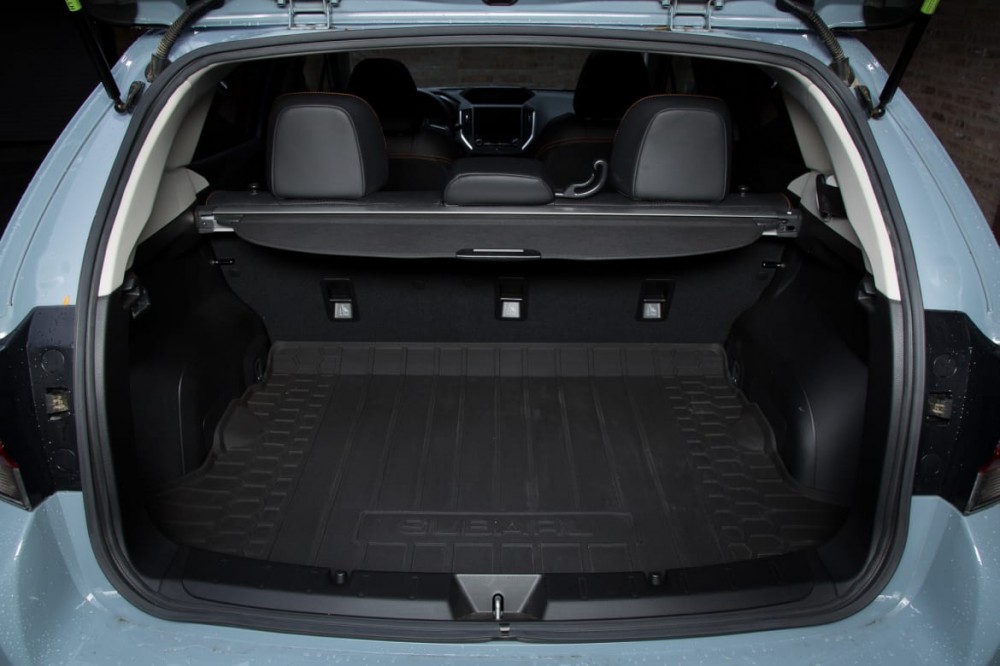
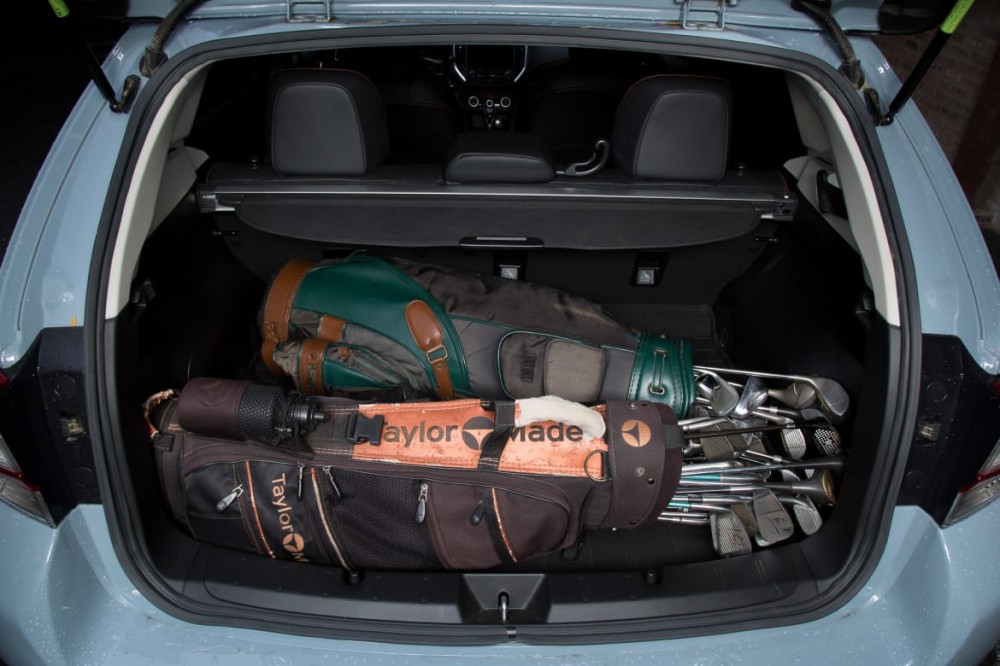
New Tech, But Not Much of It
Like the Impreza, the new Crosstrek receives Subaru's next-generation multimedia system. A 6.5-inch touchscreen display is standard and comes with Apple CarPlay and Android Auto, as well as Subaru's Starlink suite of apps that you probably shouldn't use while driving. Upgrade to a higher trim and you can get an 8-inch display and add navigation by TomTom, as well.
It's finally a fully modern multimedia system, too. It no longer looks like it's behind the times, but for a brand that's going after millennial buyers, it's curious that there isn't more tech in this interior. There's no 4G LTE Wi-Fi hot spot for passengers' personal electronics, and there's only one USB port in the whole car. Those seem like curious oversights in an all-new vehicle targeted specifically at younger buyers.
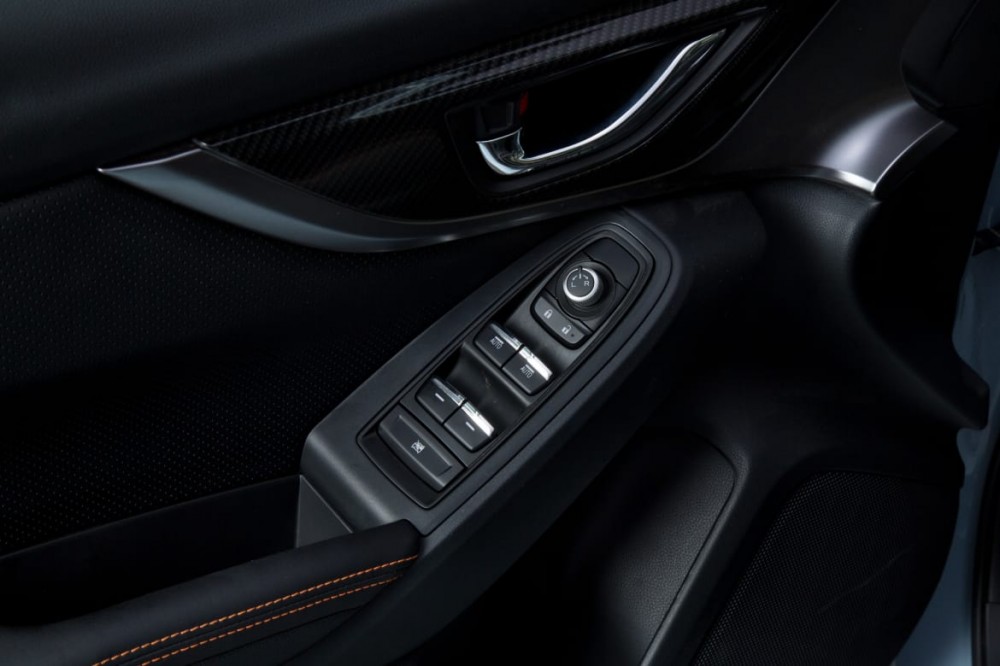
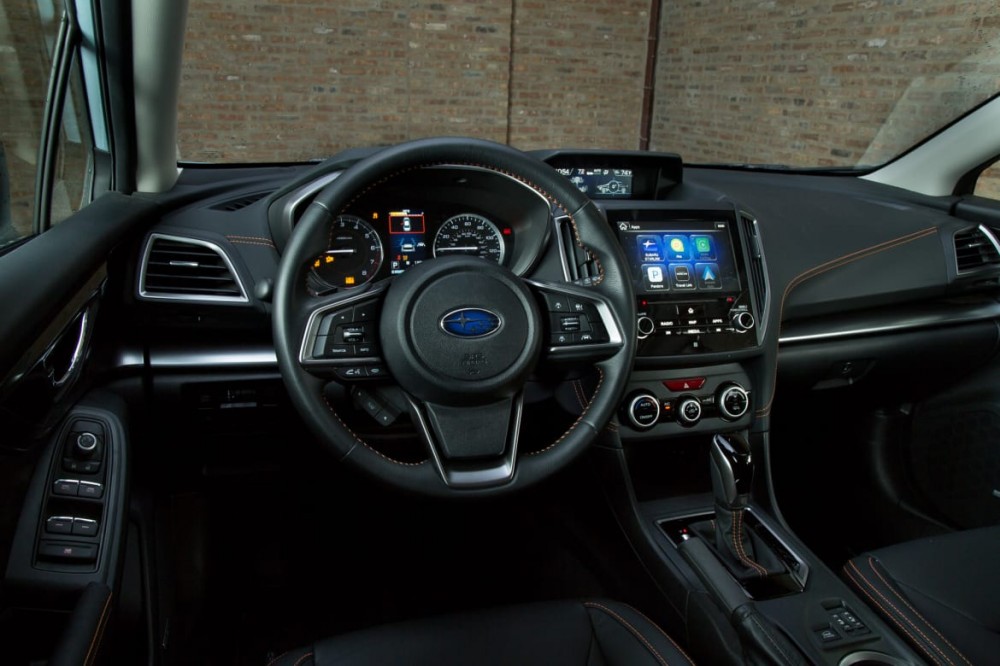
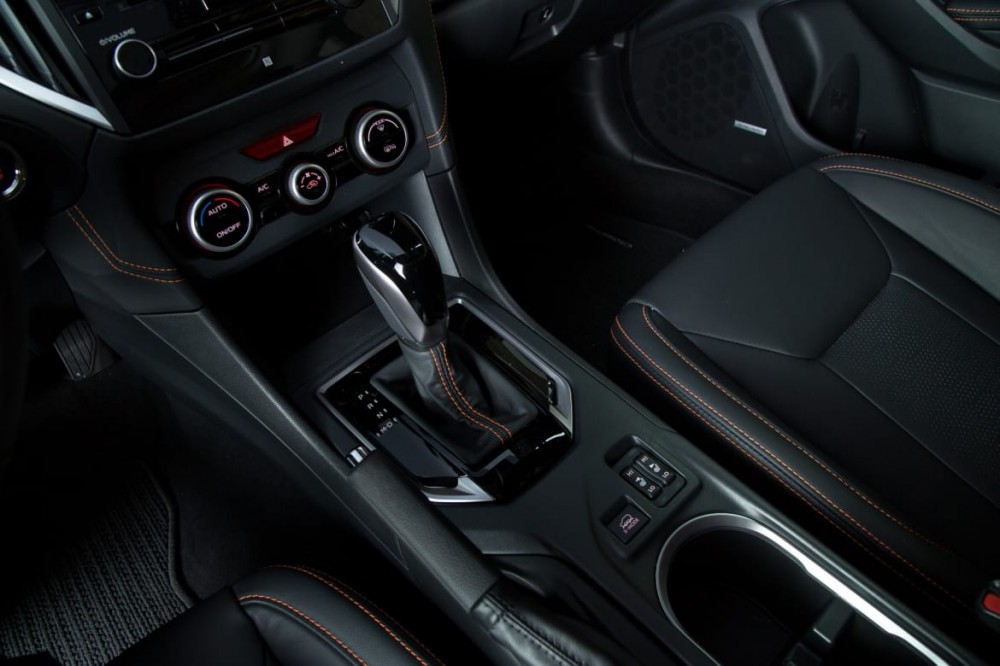
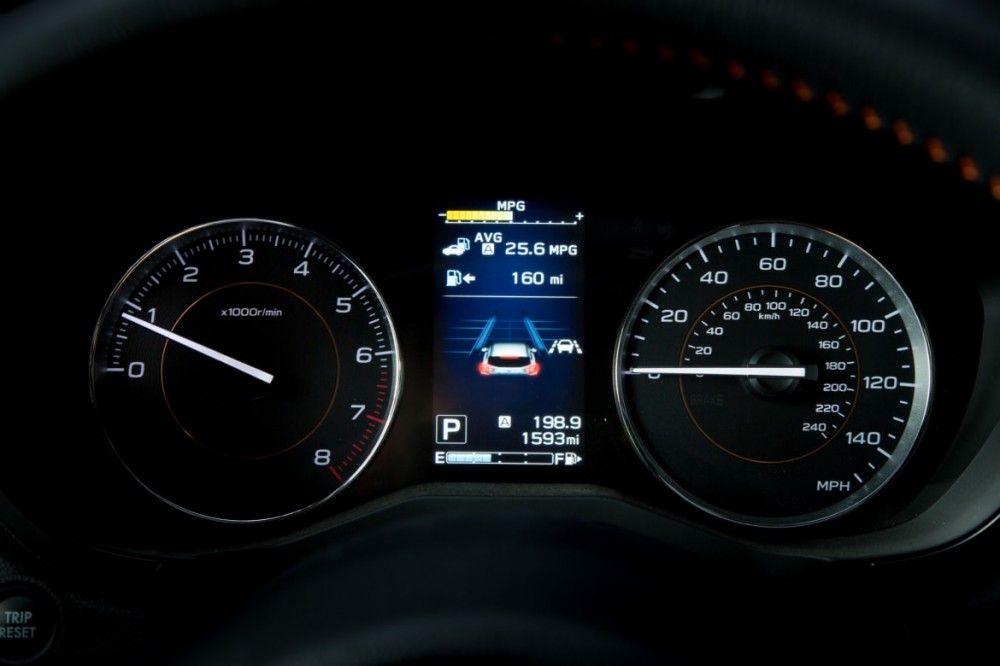
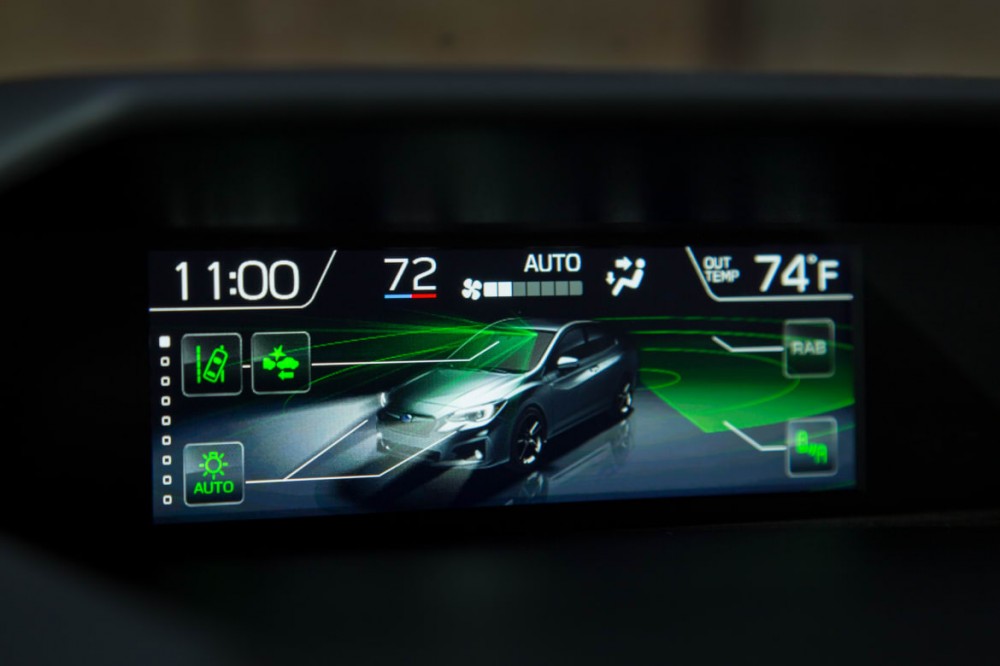
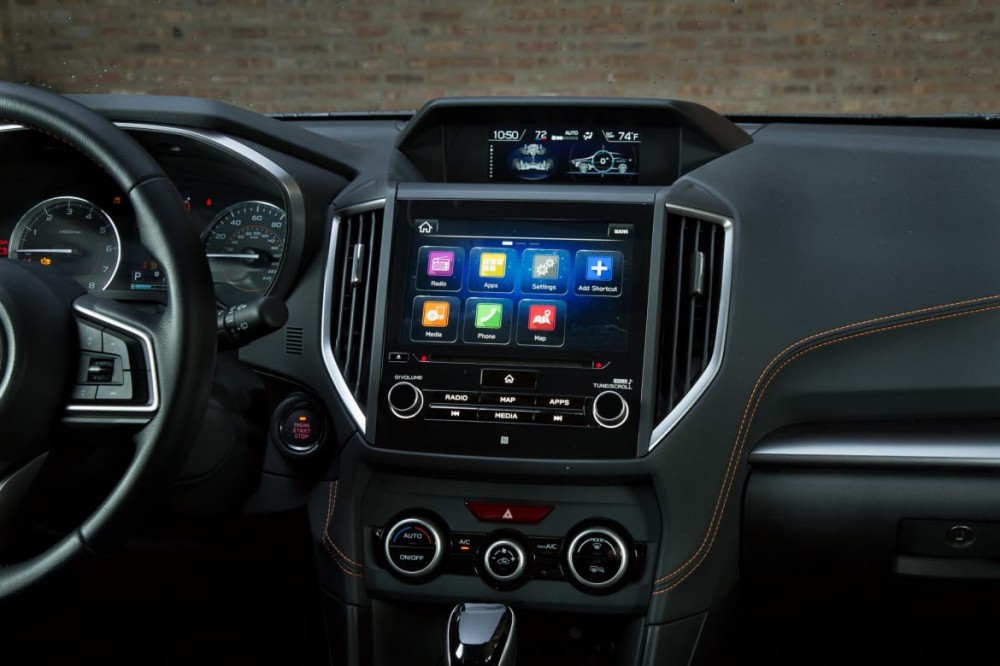
What tech the Crosstrek does have comes instead in the safety department, where the company's EyeSight system is optional. It includes lane departure warning and lane keep assist, as well as forward collision warning with autonomous emergency braking. All-wheel drive is also standard in the Crosstrek, as it is in every Subaru except the BRZ. There are also adaptive LED headlights with high beam assist available.
Prices Remain Appealing
The Crosstrek is sized like a compact SUV but priced like a subcompact SUV. Its starting price is just $22,710 (including destination fee) for a base 2.0i model with a manual transmission; opting for the automatic transmission adds $1,000. The mid-level Premium trim starts at $23,510, while the top Limited begins at $27,210 and is available only with a CVT. Add all the options, and you'll top out at $30,655 for a loaded Crosstrek Limited with EyeSight and navigation.
Competitors used to belong just to the subcompact crossover category, including vehicles like the Honda HR-V, Jeep Renegade, Mazda CX-3, Fiat 500X and Nissan Juke. They're vehicles priced the same as a Crosstrek, but a little bit smaller — some much smaller. That's starting to change as automakers expand their offerings. The Nissan Rogue Sport is now a very viable direct competitor in size, content and abilities, as is the all-new Jeep Compass. Compare some of them here.
As small SUVs go, this is a pretty good deal for a well-equipped, fun-to-drive, highly useful little machine. The fact that it's painfully slow just isn't important to the hundreds of thousands of buyers who've snapped it up in the past five years. Now, all the other attributes that made the Crosstrek so popular have only been improved.
Cars.com's Editorial department is your source for automotive news and reviews. In line with Cars.com's long-standing ethics policy, editors and reviewers don't accept gifts or free trips from automakers. The Editorial department is independent of Cars.com's advertising, sales and sponsored content departments.



Leave a Reply